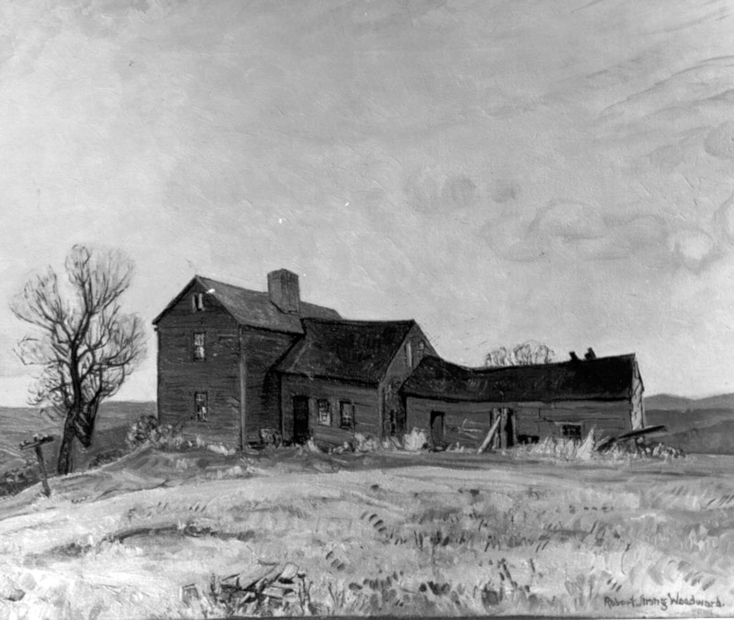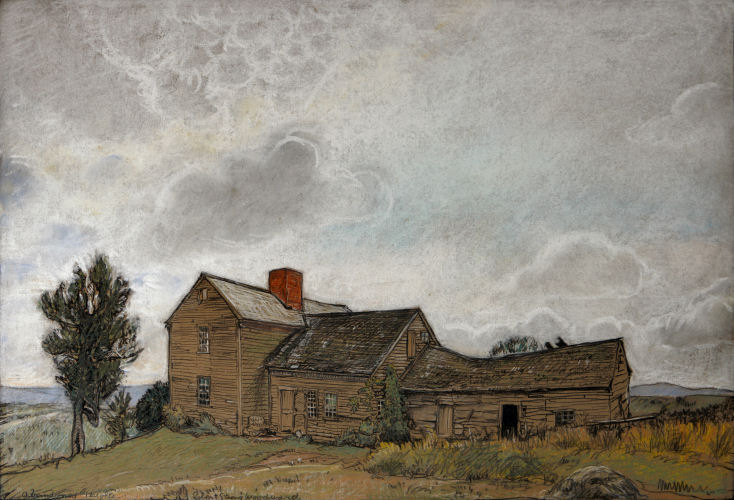Quick Reference
1930s
Leyden, MA
Oil on Canvas
Landscape
Houses
Unknown
NA
Unknown
NA
Related Links
- See also the...
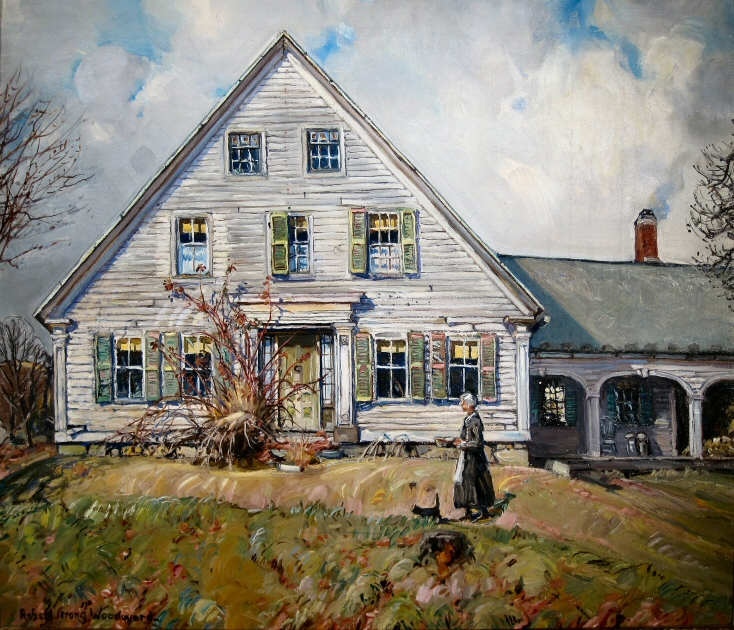 Houses Gallery to view related pieces.
Houses Gallery to view related pieces.
- See also New England Essence to view related piece.
- See also the...
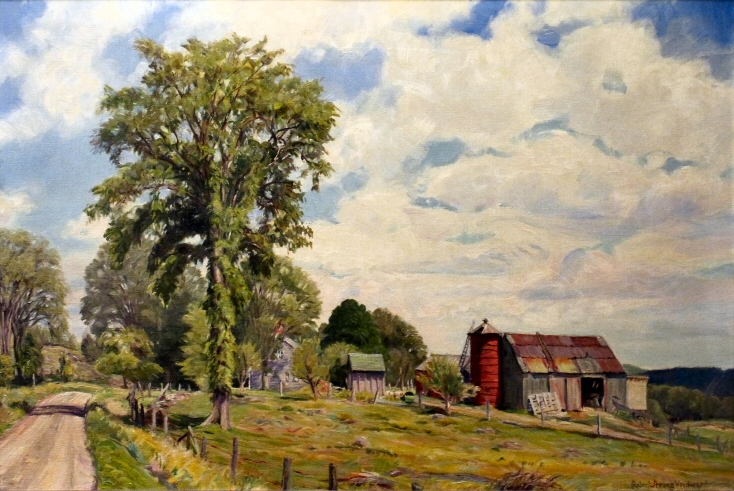 Farms Gallery to view related pieces.
Farms Gallery to view related pieces.
- See also Abandoned Heights to view related piece.
- See also the...
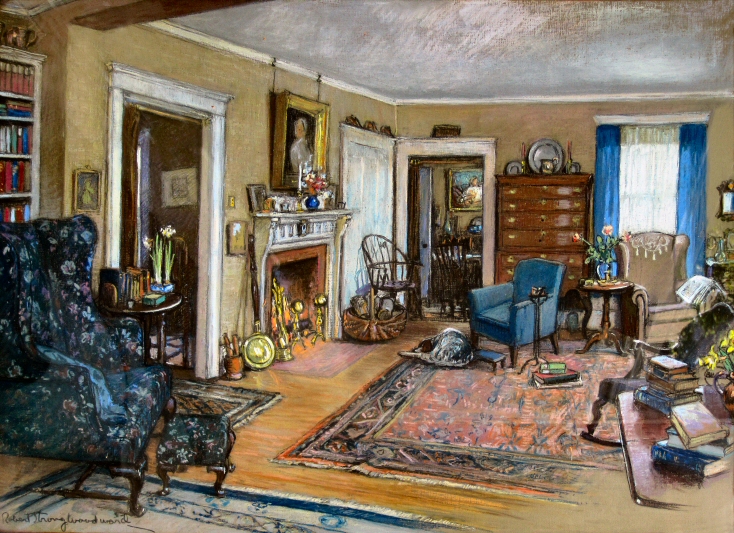 Chalks & Crayons Gallery to view other drawings
Chalks & Crayons Gallery to view other drawings
- See also the...
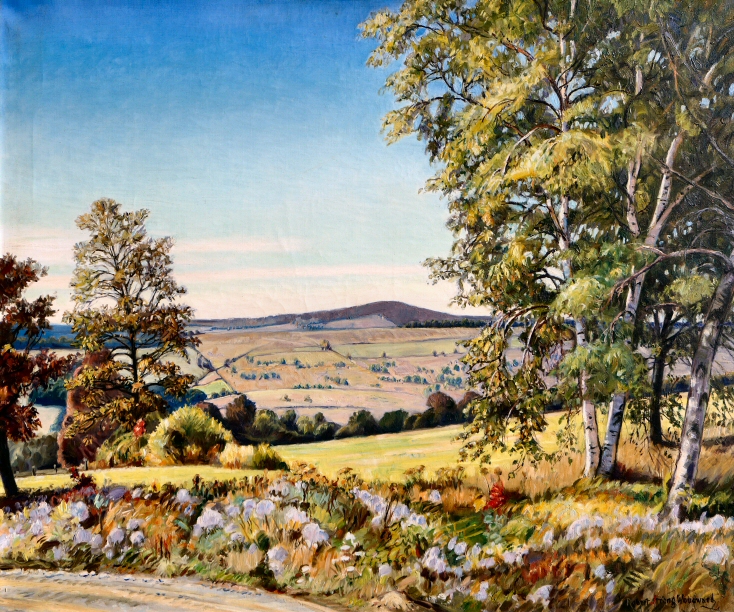 Landscapes & Views Gallery to view related pieces.
Landscapes & Views Gallery to view related pieces.
Featured Artwork: Unnamed: New England Heights
RSW's Diary Comments
 Because we do not know the name of this painting, we have not linked it
to any known diary comments made by Woodward.
Because we do not know the name of this painting, we have not linked it
to any known diary comments made by Woodward.
Editor's Note:
We went over every detail of this oil painting to compare it to the chalk drawing Abandoned Heights.
While one's initial glance may lead you to think the two are the same scene because of their perspectives. They are, but they are not
exact. It is actually not even that close:
 The skies and clouds are very different.
The skies and clouds are very different.
 The season is also different as evident in one
The season is also different as evident in one
tree having leaves and the other is bare.
 The foregrounds are different as well. In the
The foregrounds are different as well. In the
pastel, the artist is much closer to the house.
A Short Essay: Careless Abandon
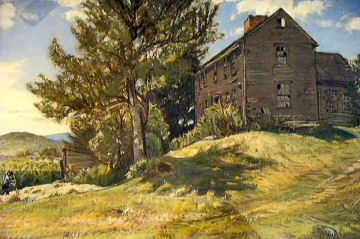
 High in New England ⮝
High in New England ⮝
Given the condition, we do not believe home is being lived in.
New England Essence ⮟
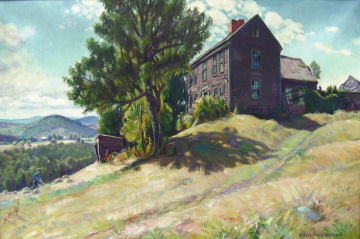
This home in Leyden, Massachusetts, that did eventually get fixed up but has not survived to this day (it was torn down in the mid-2010s)
was a fascination, along with the artist well known study of the house in Halifax, Vermont,
in the early-to-mid 1930s. It is the height of Woodward's career and he appears determined to make some statement on the plight of rural
New England.
We believe it is some sort of commentary on the neglected and often long abandoned New England Farm. A
plight that began in the years of Woodward's childhood- the mass exodus of people to the greener pastures of the expansive west. He was
a first-hand eyewitness and worse yet, heard both sides of the argument living in the Midwest for most of his adolescent life. Some families
literally, left their farms as is leaving the towns over-burdened with the lose of revenue that resulted.
His father, with whom he had a contentious relationship, profited heavily from the migration as a real estate developer which was a source of conflict
for the young man. He once expressed relief in a letter to a friend that the lovely woods outside his window would not be leveled for
development because they were protected.
Socially aware, with a great interest in the study of social economics, Woodward
surely read many of the editorials written in newspapers and magazines as a response to the New England states publishing annual reports
as to the growing "Abandoned Farms" in the region. Most of the country responded in what is called today - victim blaming or shaming.
And the vitriol increased substantially when Massachusetts published its report in 1894. The last of the New England states to do so. This
would be the catalyst of the growing cultural war of its time. The battle between the economic might of the Midwest versus the long
standing cultural, educational and artistic influence of Gothic New England.
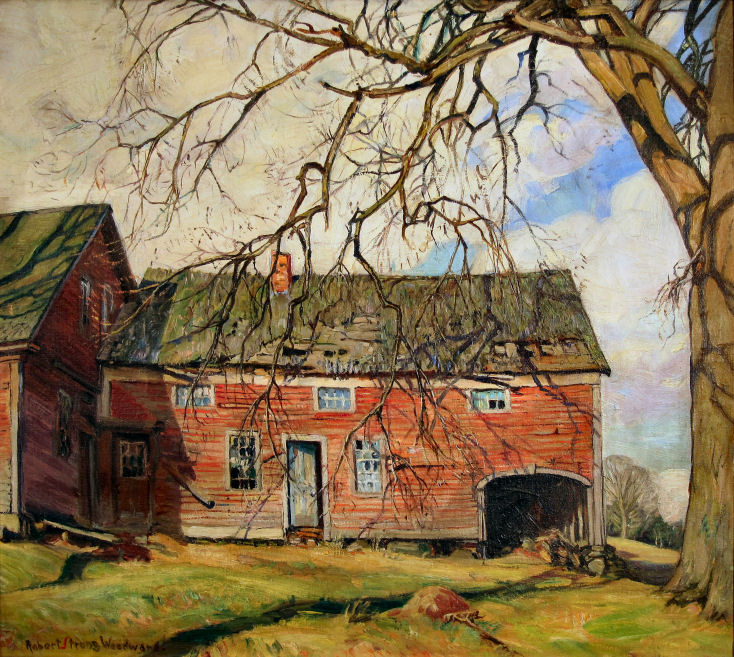
 New England Heritage, 1932, Award Winner
New England Heritage, 1932, Award Winner
This painting of the house in Halifax, VT, won second
prize by the Boston Art Clubas part of the week-long,
city-wide, Spring Art Week Celebration held annual
throughout the Boston area. It is often cited as the
artist masterpiece through the late 1930s.
Popular Science magazine wrote one such editorial in which it referred to the people who stayed behind as "shiftless" and lazy,
suggesting they were unambitious. In the same editorial, it blamed the people of the region for "educating theirs daughters" who then
left the farms to live in the cities, etc. It was quite scathing, even by today's standards. Both the Halifax house and the place in Leyden
are prime examples of abandoned farms, STILL abandoned some 30 plus years later.
We believe Woodward took these
things to heart and long desired to be the champion of New England. In this sense, he succeed greatly. While the Halifax House was
more popular in subject as well as recognition, Leyden lies over an imaginary line a number of miles just to the south raising the
question again about the disparate treatment Massachusetts seems to get versus the other states like Vermont. Nonetheless,
the Ledyen House paintings are far grimmer and bleak. There does not seem to be enough loving treatment by Woodward to get
the viewers to overlook the broken windows and collapsing buildings- no matter its location.
BCM

.png)

